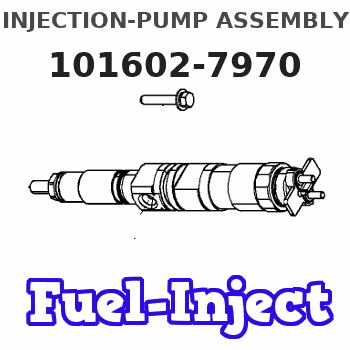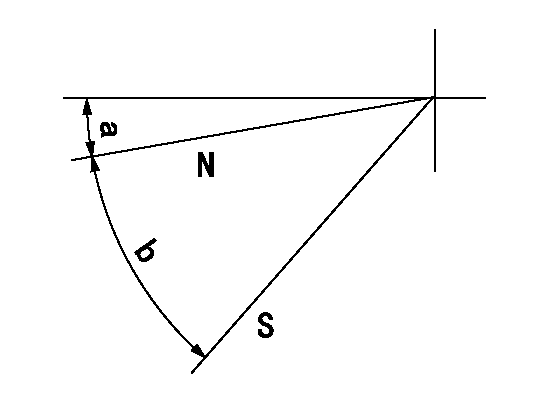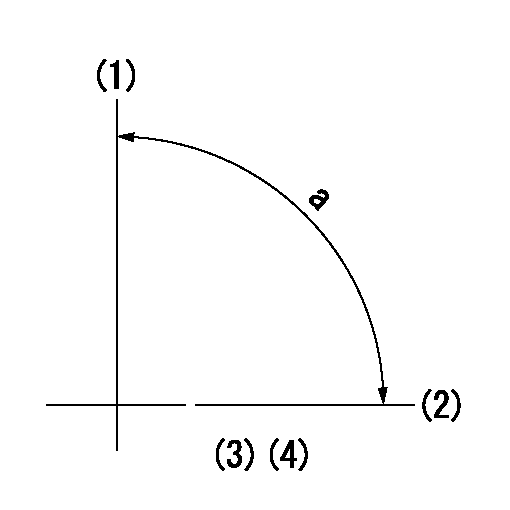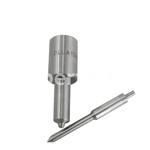Information injection-pump assembly
BOSCH
9 400 610 608
9400610608
ZEXEL
101602-7970
1016027970
ISUZU
1156031440
1156031440

Rating:
Service parts 101602-7970 INJECTION-PUMP ASSEMBLY:
1.
_
5.
AUTOM. ADVANCE MECHANIS
6.
COUPLING PLATE
8.
_
9.
_
11.
Nozzle and Holder
1-15300-291-2
12.
Open Pre:MPa(Kqf/cm2)
18.1{185}
15.
NOZZLE SET
Cross reference number
BOSCH
9 400 610 608
9400610608
ZEXEL
101602-7970
1016027970
ISUZU
1156031440
1156031440
Zexel num
Bosch num
Firm num
Name
101602-7970
9 400 610 608
1156031440 ISUZU
INJECTION-PUMP ASSEMBLY
6BG1 * K 14BE PE6A PE
6BG1 * K 14BE PE6A PE
Calibration Data:
Adjustment conditions
Test oil
... ISO4113 or {SAEJ967d}
... ISO4113 or {SAEJ967d}
Test oil temperature
degC
40
40
45
Nozzle and nozzle holder
105780-8140
Bosch type code
EF8511/9A
Nozzle
105780-0000
Bosch type code
DN12SD12T
Nozzle holder
105780-2080
Bosch type code
EF8511/9
Opening pressure
MPa
17.2
Opening pressure
kgf/cm2
175
Injection pipe
Outer diameter - inner diameter - length (mm) mm 6-2-600
Outer diameter - inner diameter - length (mm) mm 6-2-600
Overflow valve
131424-4920
Overflow valve opening pressure
kPa
127
107
147
Overflow valve opening pressure
kgf/cm2
1.3
1.1
1.5
Tester oil delivery pressure
kPa
157
157
157
Tester oil delivery pressure
kgf/cm2
1.6
1.6
1.6
Direction of rotation (viewed from drive side)
Right R
Right R
Injection timing adjustment
Direction of rotation (viewed from drive side)
Right R
Right R
Injection order
1-5-3-6-
2-4
Pre-stroke
mm
3.6
3.55
3.65
Beginning of injection position
Drive side NO.1
Drive side NO.1
Difference between angles 1
Cal 1-5 deg. 60 59.5 60.5
Cal 1-5 deg. 60 59.5 60.5
Difference between angles 2
Cal 1-3 deg. 120 119.5 120.5
Cal 1-3 deg. 120 119.5 120.5
Difference between angles 3
Cal 1-6 deg. 180 179.5 180.5
Cal 1-6 deg. 180 179.5 180.5
Difference between angles 4
Cyl.1-2 deg. 240 239.5 240.5
Cyl.1-2 deg. 240 239.5 240.5
Difference between angles 5
Cal 1-4 deg. 300 299.5 300.5
Cal 1-4 deg. 300 299.5 300.5
Injection quantity adjustment
Adjusting point
A
Rack position
8.9
Pump speed
r/min
725
725
725
Average injection quantity
mm3/st.
69.5
68
71
Max. variation between cylinders
%
0
-2
2
Basic
*
Fixing the lever
*
Injection quantity adjustment_02
Adjusting point
-
Rack position
7.3+-0.5
Pump speed
r/min
375
375
375
Average injection quantity
mm3/st.
8
6.7
9.3
Max. variation between cylinders
%
0
-14
14
Fixing the rack
*
Remarks
Adjust only variation between cylinders; adjust governor according to governor specifications.
Adjust only variation between cylinders; adjust governor according to governor specifications.
Injection quantity adjustment_03
Adjusting point
D
Rack position
-
Pump speed
r/min
100
100
100
Average injection quantity
mm3/st.
100
95
105
Fixing the lever
*
Rack limit
*
Test data Ex:
Governor adjustment

N:Pump speed
R:Rack position (mm)
(1)Target notch: K
(2)Tolerance for racks not indicated: +-0.05mm.
(3)RACK LIMIT
(4)Set idle sub-spring
(5)Main spring setting
----------
K=11
----------
----------
K=11
----------
Speed control lever angle

F:Full speed
I:Idle
(1)Speed set at aa (setting at supply)
(2)When pump speed set at bb
----------
aa=905r/min bb=750r/min
----------
a=20deg+-5deg b=0deg+-5deg c=5deg+-5deg
----------
aa=905r/min bb=750r/min
----------
a=20deg+-5deg b=0deg+-5deg c=5deg+-5deg
Stop lever angle

N:Pump normal
S:Stop the pump.
----------
----------
a=2.5deg+-5deg b=46deg+-5deg
----------
----------
a=2.5deg+-5deg b=46deg+-5deg
Timing setting

(1)Pump vertical direction
(2)Position of gear mark 'CC' at No 1 cylinder's beginning of injection
(3)B.T.D.C.: aa
(4)-
----------
aa=14deg
----------
a=(90deg)
----------
aa=14deg
----------
a=(90deg)
Information:
Adjusting the engine speeds
To adjust engine speed, remove the cooling fan and install the safety cover over the fan to prevent getting hurt. For speed adjustment specification, see 8-05.(1) The upper limit of engine speed can be adjusted with the HIGH-SPEED stopper bolt.This stopper bolt has been set properly and sealed in the factory before shipping of the engine. Never tamper with the seal unless it is necessary.(2) The lower limit of engine speed can be adjusted with the LOW-SPEED stopper bolt.(3) Never remove the sealing cap unnecessarily to adjust the torque spring set. For the proper disassembling procedure, see 4-02. CAUTION Warm up the engine (until coolant temperature rises up to 60°C or above) before adjusting engine speeds.(4) During running of the engine for speed adjustment, check the engine for gas leak, water leak, oil leak, and fuel leak.(5) After adjustment, perform engine acceleration and deceleration test to confirm that the engine is free from hunting and smoking.
HIGH-SPEED and LOW-SPEED Set BoltsChecking and adjustment of nozzles
To check and adjust the injection nozzles, use the following procedure:1. Injection start pressure(1) Remove the nozzle assembly to be tested from the cylinder head and set the nozzle on the nozzle tester.Perform air bleeding by moving the tester handle up and down.(2) Operate the handle at a speed of 60 rpm or more and read the gauge pressure of fuel injected from the nozzle.* Injection start pressure: 140 +10-0kgf/cm2 [13.7+1.0-0 MPa(3) If reading of gauge pressure is not within the specified range, disassemble the nozzle and vary thickness of the adjusting shim.Increasing or decreasing shim thickness by 0.1 mm will cause injection pressure to vary about 10 kgf/cm2 [0.98 MPa]
Testing Injection Start Pressure(4) When installing the nozzle, use the following values of tightening torque:* Nozzle tightening (to cylinder head) torque: 5.0 - 6.0 kgf m [49 - 59 N m]* Nozzle retaining nut tightening torque: 3.5 - 4.0 kgf m [34 - 39 N m]* Nozzle union collar tightening torque: 2.5 - 3.0 kgf m [25 - 29 N m]
Installing Nozzle Assembly2. Chattering testOperate the tester handle at a speed of about 1 stroke per second.(1) Needle valve oscillationIt is considered normal if the nozzle injects fuel mist, making intermittent sounds, and oscillations of the needle valve are transmitted to the handle.(2) State of fuel mist injectionThe nozzle should inject fuel mist straight in the direction of its axis. A nozzle is defective if it does not inject steadily or it injects fuel in several separate stripes.A nozzle is defective if it spills fuel accumulated on the bottom of the nozzle after chattering test. However, a very small drop of fuel remaining on the tip of nozzle after chattering test may be regarded as normal.
Charttering Test
After-spilling3. Injection testOperate the tester handle at a speed of 4 to 6 strokes per second.* A nozzle should inject fuel mist uniformly in the shape of a cone.4. Checking the compression pressure(1) Make sure of the following:(a) All of the engine oil level, air cleaner,
To adjust engine speed, remove the cooling fan and install the safety cover over the fan to prevent getting hurt. For speed adjustment specification, see 8-05.(1) The upper limit of engine speed can be adjusted with the HIGH-SPEED stopper bolt.This stopper bolt has been set properly and sealed in the factory before shipping of the engine. Never tamper with the seal unless it is necessary.(2) The lower limit of engine speed can be adjusted with the LOW-SPEED stopper bolt.(3) Never remove the sealing cap unnecessarily to adjust the torque spring set. For the proper disassembling procedure, see 4-02. CAUTION Warm up the engine (until coolant temperature rises up to 60°C or above) before adjusting engine speeds.(4) During running of the engine for speed adjustment, check the engine for gas leak, water leak, oil leak, and fuel leak.(5) After adjustment, perform engine acceleration and deceleration test to confirm that the engine is free from hunting and smoking.
HIGH-SPEED and LOW-SPEED Set BoltsChecking and adjustment of nozzles
To check and adjust the injection nozzles, use the following procedure:1. Injection start pressure(1) Remove the nozzle assembly to be tested from the cylinder head and set the nozzle on the nozzle tester.Perform air bleeding by moving the tester handle up and down.(2) Operate the handle at a speed of 60 rpm or more and read the gauge pressure of fuel injected from the nozzle.* Injection start pressure: 140 +10-0kgf/cm2 [13.7+1.0-0 MPa(3) If reading of gauge pressure is not within the specified range, disassemble the nozzle and vary thickness of the adjusting shim.Increasing or decreasing shim thickness by 0.1 mm will cause injection pressure to vary about 10 kgf/cm2 [0.98 MPa]
Testing Injection Start Pressure(4) When installing the nozzle, use the following values of tightening torque:* Nozzle tightening (to cylinder head) torque: 5.0 - 6.0 kgf m [49 - 59 N m]* Nozzle retaining nut tightening torque: 3.5 - 4.0 kgf m [34 - 39 N m]* Nozzle union collar tightening torque: 2.5 - 3.0 kgf m [25 - 29 N m]
Installing Nozzle Assembly2. Chattering testOperate the tester handle at a speed of about 1 stroke per second.(1) Needle valve oscillationIt is considered normal if the nozzle injects fuel mist, making intermittent sounds, and oscillations of the needle valve are transmitted to the handle.(2) State of fuel mist injectionThe nozzle should inject fuel mist straight in the direction of its axis. A nozzle is defective if it does not inject steadily or it injects fuel in several separate stripes.A nozzle is defective if it spills fuel accumulated on the bottom of the nozzle after chattering test. However, a very small drop of fuel remaining on the tip of nozzle after chattering test may be regarded as normal.
Charttering Test
After-spilling3. Injection testOperate the tester handle at a speed of 4 to 6 strokes per second.* A nozzle should inject fuel mist uniformly in the shape of a cone.4. Checking the compression pressure(1) Make sure of the following:(a) All of the engine oil level, air cleaner,
Have questions with 101602-7970?
Group cross 101602-7970 ZEXEL
Isuzu
101602-7970
9 400 610 608
1156031440
INJECTION-PUMP ASSEMBLY
6BG1
6BG1
